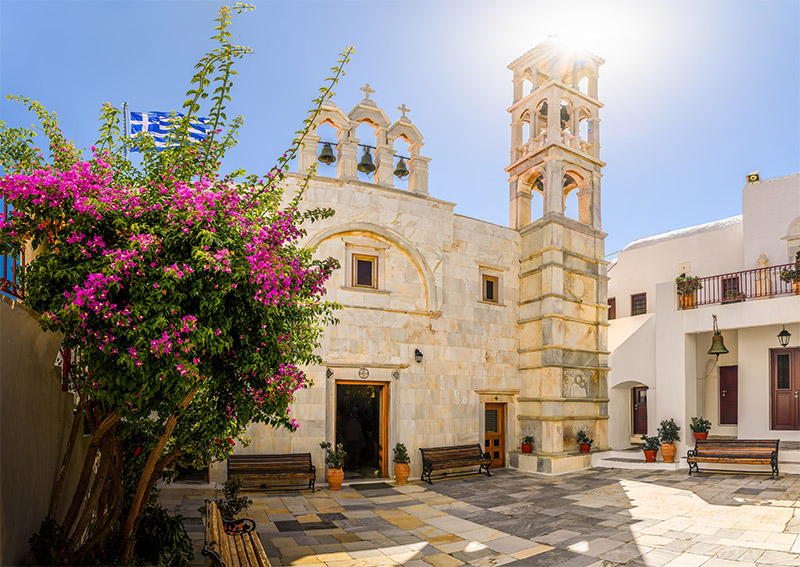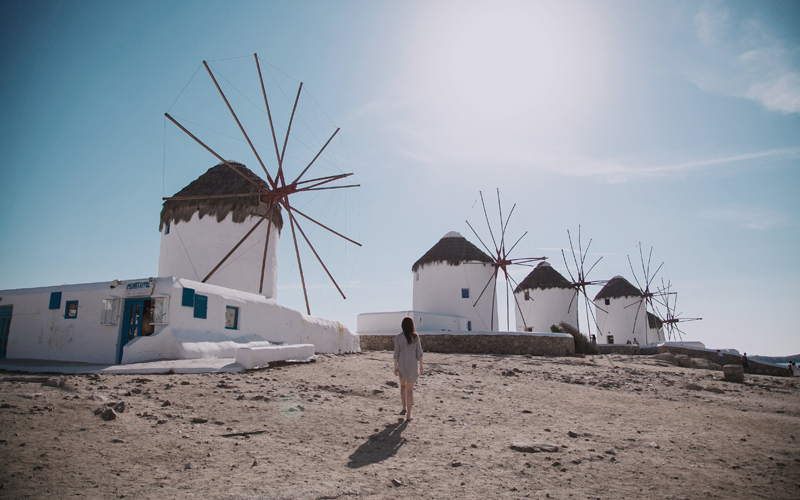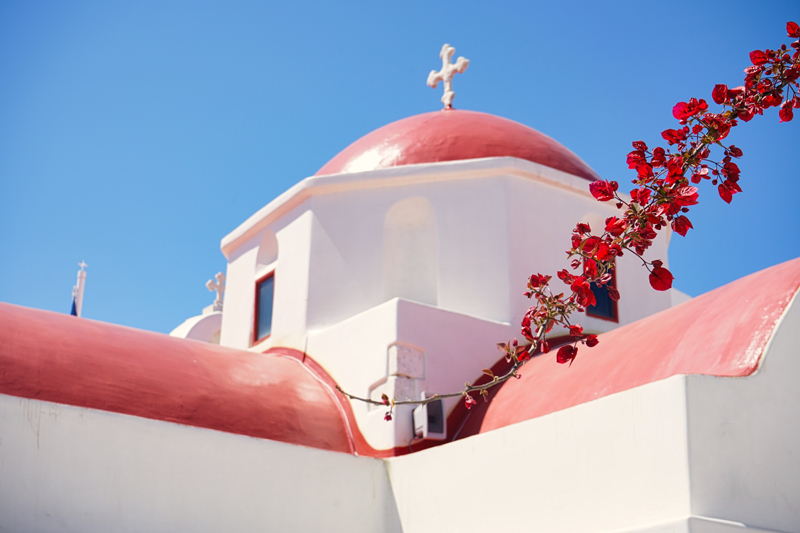Among the countless tourism medals Mykonos has earned since the 1950s, the island has also become one of the top Instagram-worthy destinations in the world. And that hardly needs explanation—deep blue sea and skies, famous landmarks, explosive nightlife, and the celebrities that flood its alleys and beaches every summer are more than enough for picture-perfect content shared across the social media platforms.
To be honest, what we usually see posted is the classic: photos in front of the iconic windmills, their wings spinning with the help of the strong Cycladic “meltemia” (northern winds); videos of the narrow alleys in the world-famous Little Venice neighborhood, right in front of legendary bars frequented by Hollywood stars and athletes; snapshots at the old port with the island’s famous pelican—though not the legendary Petros, but one of his anonymous successors, still strolling around restaurant tables in search of a piece of fish or some bread; and of course, videos from iconic beaches like Panormos, Elia, or Psarrou, with their luxurious sunbeds and emblematic beach bars where the party never ends.
That’s the typical “don’t-miss list” of Mykonos. But it’s not all.
Every corner of the island hides magical, Instagram-worthy scenery—like the historical Armenistis Lighthouse, one of the most impressive and romantic spots on the island. Or Ano Mera, Mykonos’ main village, with its charming bakeries and cafés, and local wineries where you can taste the region’s wine, ouzo, and tsipouro. From there, it’s worth visiting the large Byzantine monasteries—and later, when you return to Mykonos Town (Chora), get lost in its quieter alleys to capture the magic of the small, white-washed houses and some really unique beauties, like the miniature churches built into their basements.
Or hop on a boat to the neighboring sacred island of Delos, and take extraordinary selfies next to its rare archaeological treasures that can only be found here. There, you’ll also stand in awe watching the breathtaking sunset that’s rightly considered one of the most beautiful in the Aegean Sea. For the more adventurous, rent a sailing yacht or motorboat to discover Mykonos’ most secluded beaches—and bring your underwater camera to capture the magical colors of the deep as you snorkel.
So, next time you plan your trip to Mykonos, along with your tickets and packing list, create also a list of lesser-known, “Instagrammable” spots that will not only help you create some of your best memories, but will also impress your followers and make them fall in love with this one-of-a-kind destination.






